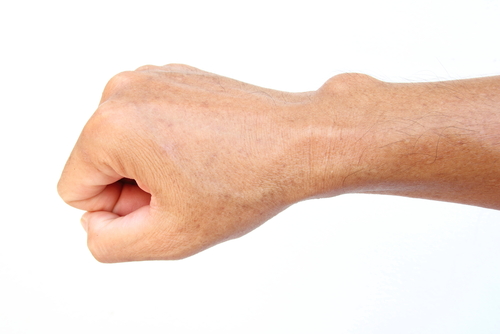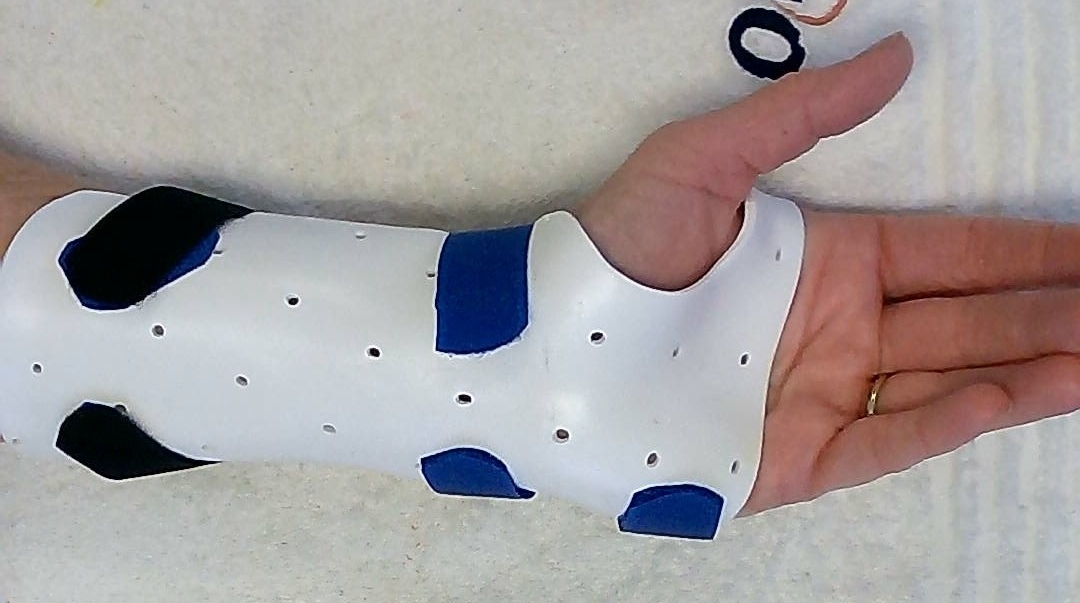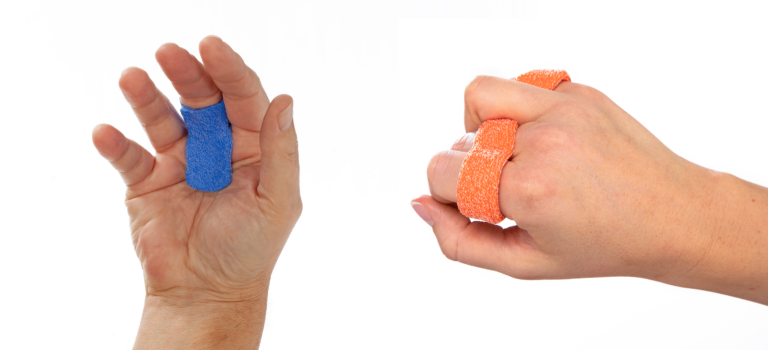
Ganglion cysts in the wrist
To immobilize after surgical removal or not?

Ganglion cysts in the wrist
Ganglion cysts are small, fluid filled cysts that often appear in the volar or dorsal wrist joints. Dorsal ganglion cysts arise from the scapho-lunate interval. They are typically round or oval in shape and can change size. They might cause pain with movements of the wrist and/or if they press on the nerves. The cause of these cysts is unknown. Sometimes these cysts are drained to remove the fluid, but they often reoccur. Sometimes they are removed surgically.
Post-operative care following ganglion cyst removal typically includes scar management, wrist range of motion exercises, tendon glides and sometimes, immobilization in a wrist orthosis or splint. A systematic review of this topic looked at studies that discussed the post-operative rehabilitation protocols following removal of ganglions cysts in the dorsal wrist to see whether current practice supports the use of a wrist orthosis/splint for this condition. A survey was also conducted among Canadian hand surgeons on this topic.
The systematic review included 24 studies of which 3 were randomized clinical trials and twenty were observational studies. 11 of these studies involved open excision to remove the ganglion while twelve studies involved arthroscopic excision and one study involved both open and arthroscopic excision.
Of the 12 studies on patients who received an open excision, 6 studies used rigid immobilization and five studies used soft dressings with some wrist movement allowed while one study used either. The immobilization period lasted from 2 days to 2 weeks with some studies not listing a time frame.
Of the 13 studies on patients who received arthroscopic excision, 6 studies used rigid immobilization and five studies allowed some wrist movement while 2 studies used neither. The immobilization period lasted from 5 days to 3 weeks with some studies not listing a time frame.
Due to inconsistent reporting, it was difficult to determine the effectiveness of these wrist immobilization protocols. There was also inconsistent data gathered with regard to functional outcomes. Some of the studies reported on pain levels that were much improved; other studies noted high patient satisfaction levels following excision and still other studies reported return to work after 11 days of immobilization versus return to work after 16-20 days for non-immobilized patients.
The survey was sent to 65 Canadian hand surgeons, but only twenty-two completed the survey. The survey found that the 45% of the surgeons immobilized the wrist following surgery with a volar wrist splint for 1-2 weeks, while in contrast, 55% of the surgeons found no need for immobilization.
Conclusion
There is an apparent lack of consensus regarding the optimal post-operative rehabilitation protocol for patients following excision of dorsal wrist ganglion cysts. There is wide variability in the type of wrist immobilization and in the duration of wrist immobilization. There is no evidence that one strategy is better than the other. Immobilization typically lasts about 2 weeks or less.

Wrist orthosis Multifit NS
Please share with us your protocol following excision of a dorsal wrist ganglion!
Do you fabricate a wrist orthosis?
How long does your patient wear it?
Was the surgery done open excision or arthroscopically?
What outcome measures do you use to evaluate your patient?
Please send your comments to debby.schwartz@orfit.com!
Thank you in advance for your comments.
Reference
Wong, C. R., Karpinski, M., Hatchell, A. C., McRae, M. H., Murphy, J., & McRae, M. C. (2023). Immobilization of the wrist after dorsal wrist ganglion excision: A systematic review and survey of current practice. HAND, 18(2), 254-263.
![]()

Writer: Debby Schwartz, OTD, OTR/L, CHT
Physical Rehabilitation Product and Educational Specialist at Orfit Industries America.
Debby is a certified hand therapist with over 36 years of clinical experience. She completed her Doctorate of Occupational Therapy at Rocky Mountain University of Health Professions in 2010. She has worked at Orfit Industries America as Product and Educational Specialist since 2007.
Debby is also an adjunct professor at the Occupational Therapy Department of Touro University, School of Health Sciences, and at the Occupational Therapy Department at Yeshiva University, Katz School of Science and Health in NYC. She has written many book chapters in the field of hand therapy and multiple articles for hand therapy journals, including the ASHT Times and the Journal of Hand Therapy. She has published a new textbook on orthotic fabrication together with Dr. Katherine Schofield, entitled “Orthotic Design and Fabrication for the Upper Extremity: A Practical Guide”.
![]()
If you’d like to receive the latest product updates and interesting Orfit news, subscribe to our newsletter:



